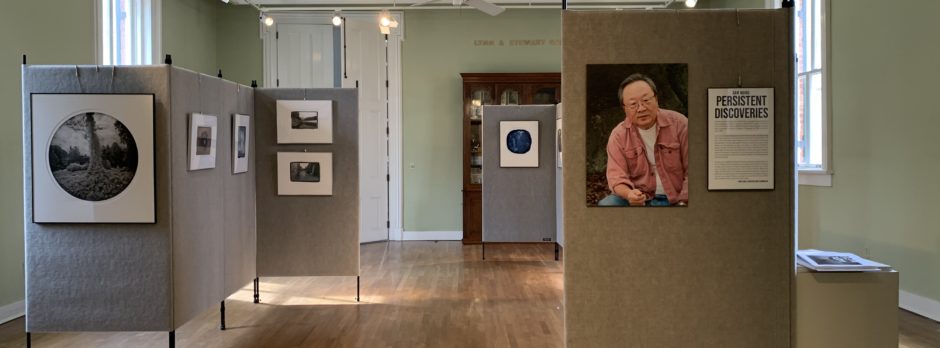Gammill Gallery
About the Gammill Gallery
Mission
The Gammill Gallery is a visual arts exhibition space conceived to inspire and engage audiences and to promote public understanding of the American South as a diverse and complex regional culture.
VIsion
The Gammill Gallery seeks to exhibit a broad range of artwork focused on the South as a social, cultural, and physical space that has both a long history and an evolving future. Neither the artists nor the work exhibited are required to be from the region, but all work should address concepts and issues relevant to the present-day South.
VALUES
The Gammill Gallery is committed to creating an inclusive environment where all voices are heard. At least two exhibits annually will be dedicated to showcasing the work of underrepresented artists or underrepresented communities.
HISTORY
The Gammill Gallery, located in the heart of Barnard Observatory, is named for Lynn and Stewart Gammill of Hattiesburg, Mississippi, longtime supporters of the Center for the Study of Southern Culture.
Exhibitions primarily devoted to documentary-style photography from the American South, including some of the region’s most respected photographic educators and professionals such as Maude Schuyler Clay, William Ferris, Will Jacks, Betty Press, Tom Rankin, Euphus Ruth, Jerry Siegel, and Bill Steber, to mention only a few, have hung in the Gammill Gallery.
The Gammill Gallery is open Monday through Friday, 9:00 a.m. – 5:00 p.m., except for University holidays. For more information, contact us.
On display now:
ivette spradlin “the warehouses”
Ivette Spradlin’s photography project, titled The Warehouses and based on her Wild Wild West End Oral History, will exhibit in the Gammill Gallery in Barnard Observatory now through Feb. 26. A walk-through exhibition talk with Spradlin will take place at 5 p.m. Feb. 26.
Ivette Spradlin is a Cuban American artist whose work centers on the emotional aspects of transition, adaptation, and communal ties. She holds an MFA from Tyler School of Art at Temple University and a BFA from the University of Georgia. Since the 1990s she has photographed and recorded the stories of members of different subcultures and their environs, such as punks and skateboarders, Cuban exiles in the United States, female-identifying artists, elderly jazz musicians in Pittsburgh, people who have experienced a Bigfoot sighting, and her friends and neighbors during the 2020 lockdown.
Spradlin’s project Wild Wild West End Oral History was originally developed from the fall of 1999 to the spring of 2000. Tenants of four warehouses in the West End of Atlanta, Georgia—punks, artists, dreamers—agreed to be photographed. Each subject was also asked to give a quote to accompany their image. Their likeness, their musings, and the warehouse itself were then turned into a handmade book called The Warehouses. The book is coptic-bound and filled with screen-printed collages from photographs of their living environs and silver gelatin prints of the tenants. All text was letter pressed with handset type. Only one complete copy of the artist book was ever made.
The video of these oral histories offers a new perspective and accounting of this unique warehouse living experience. While the book documents Atlanta’s DIY scene at the turn of the last century, the oral histories offer memories of a specific place and time in a subculture. If the book is the facts, the videos are the feeling. Former warehouse tenants tell stories about the freedom they felt and the friendships and bonds created there.

